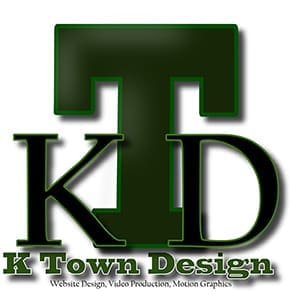Affordable website design doesn’t mean compromising on quality
Affordable website design doesn’t mean compromising on quality. It’s about making smart choices that give you the best value for your money. Whether you’re a startup founder, small business owner, or a hobbyist, understanding how to create a website affordably is crucial. By focusing on key elements and utilizing cost-effective resources, you can develop a website that meets your needs and budget.
Defining Your Budget
The first step in affordable website design is setting a clear budget. Understanding your financial constraints will help you make informed decisions about which platforms and services to use. Consider all potential expenses, including hosting, domain registration, and additional features. A well-planned budget will prevent overspending and help you allocate resources efficiently.
Prioritizing Essential Features
Not all features are necessary for every website. Prioritize the features that align with your business goals and audience needs. For example, if you’re running an e-commerce site, an efficient shopping cart and secure payment gateway are essential. By focusing on what truly matters, you can avoid unnecessary costs and streamline the design process.
Exploring Cost-Effective Resources
There are numerous resources available that can help you design a website on a budget. From free tools to affordable templates, these resources can significantly reduce costs. Research different options and read reviews to find reliable and effective tools that suit your needs. Leveraging these resources can help you achieve a professional look without the high price tag.
The Importance of Planning
Before diving into website creation, it’s important to have a clear plan. Decide on the purpose of your website, the features you need, and your target audience. Planning helps avoid unnecessary expenses and ensures that your website is tailored to your specific requirements.
Defining Your Website’s Purpose
Clearly defining the purpose of your website is the foundation of effective planning. Are you looking to sell products, share information, or build a community? Understanding your primary goal will guide your design choices and ensure your site meets its objectives. A well-defined purpose also helps in creating a cohesive user experience.
Identifying Your Target Audience
Knowing your target audience is crucial in designing a website that resonates with visitors. Conduct market research to understand your audience’s preferences, behaviors, and needs. This information will inform your content strategy, design elements, and functionality, ensuring your website appeals to the right people.
Creating a Content Strategy
A content strategy outlines how you will communicate with your audience through your website. Determine the types of content you will create, such as blog posts, videos, or infographics. Consider how often you will update your site and how you will promote your content. A solid content strategy helps keep your website relevant and engaging.
Choosing the Right Platform
One of the most significant factors affecting the cost of website design is the platform you choose. There are several affordable options that offer robust features without the high price tag.
WordPress
WordPress is a popular choice for affordable website design. It’s an open-source platform with a vast array of free and premium themes and plugins. With WordPress, you can customize your site extensively while keeping costs low. Additionally, many hosting providers offer affordable WordPress hosting packages.
Exploring WordPress Themes
WordPress offers a wide variety of themes that can cater to different industries and styles. Free themes provide a good starting point, but premium themes can offer more advanced features and professional designs. Consider your brand’s aesthetics and functionality needs when selecting a theme to ensure it aligns with your vision.
Utilizing WordPress Plugins
Plugins are a powerful way to enhance your WordPress site without significant investment. From SEO tools to social media integrations, there are plugins available for almost any functionality you might need. Be mindful of the number of plugins you install, as too many can slow down your site.
Hosting Options for WordPress
When choosing a hosting provider for your WordPress site, consider factors such as cost, performance, and support. Many providers offer WordPress-specific hosting plans that optimize performance and provide easy installation. Compare different hosting options to find the best fit for your budget and technical requirements.
Customization and Flexibility
While website builders offer pre-designed templates, they also allow for a degree of customization. Adjust colors, fonts, and layouts to match your brand identity. Ensure the platform you choose provides the flexibility you need to create a unique and engaging website without additional costs.
Support and Resources
Consider the level of support offered by the website builder. Many platforms provide tutorials, customer support, and community forums to assist you in the design process. Access to these resources can be invaluable, especially if you’re new to web design and need guidance along the way.
Leveraging Affordable Website Design Packages
Many web design agencies offer affordable website design packages tailored to different needs. These packages can be a cost-effective way to get a professionally designed website without high costs.
What’s Included in a Package?
Affordable website design packages typically include a set number of pages, a choice of templates, basic SEO setup, and support. By selecting a package that matches your needs, you can control costs while ensuring a professional outcome.
Evaluating Package Contents
When considering a design package, carefully evaluate what is included. Some packages may offer additional features like e-commerce integration or content creation. Compare packages from different providers to find the best balance of cost and features for your project.
Understanding Support Services
Support services can vary widely between design packages. Determine the level of support you require, such as ongoing maintenance or troubleshooting assistance. Knowing what support is available can help you choose a package that ensures your website remains functional and up-to-date.
Balancing Cost and Quality
It’s important to strike a balance between affordability and quality when choosing a design package. Opting for the cheapest option may compromise the professionalism of your site, while more expensive packages may include unnecessary features. Assess your priorities and select a package that aligns with your goals and budget.
Customization vs. Templates
While custom designs are usually more expensive, using templates can significantly reduce costs. Most templates are customizable, allowing you to inject your brand’s personality while keeping the design process affordable.
Advantages of Template-Based Design
Templates offer a quick and cost-effective way to establish a web presence. They eliminate the need for complex coding and provide a structured foundation for your site. Templates can be a great starting point for those with limited design experience or tight budgets.
Personalizing Your Template
Even when using a template, personalization is key to creating a unique website. Modify colors, fonts, and images to reflect your brand identity. Adding custom elements like logos and branded graphics can further distinguish your site from others using the same template.
Knowing When to Opt for Customization
While templates are budget-friendly, there are times when customization is necessary. If you have specific functionality needs or a distinct brand vision, investing in custom design elements may be worthwhile. Consider your long-term goals and budget when deciding between templates and custom design.
Tips for Reducing Costs
Creating a website doesn’t have to be expensive. Here are some tips to keep your web design affordable:
DIY Design
If you have some technical skills, consider designing your website yourself. Many platforms offer drag-and-drop interfaces that make it easy to create a professional-looking site without coding knowledge.
Exploring DIY Tools
Numerous tools are available for DIY web design, catering to various skill levels. Platforms like WordPress, Wix, and Canva provide intuitive interfaces for creating visually appealing sites. Explore these tools to find one that matches your design skills and allows you to build a site efficiently.
Learning Basic Design Principles
Understanding basic design principles can enhance your DIY efforts. Familiarize yourself with concepts like balance, contrast, and typography to create a visually pleasing site. Many online resources and tutorials can help you develop these skills, improving the overall quality of your website.
Managing Time and Resources
DIY design requires a significant time investment, so plan your project timeline accordingly. Allocate time for learning, experimentation, and revisions. Efficiently managing your time and resources will help you create a professional website without overwhelming yourself.
Utilize Free Resources
Take advantage of free resources available online. There are free stock photos, icons, and even video content that you can use to enhance your website’s visual appeal without spending extra.
Accessing Free Stock Photos
High-quality visuals are essential for a professional website, but purchasing images can be costly. Utilize free stock photo websites like Unsplash or Pexels to find images that enhance your site’s aesthetic. Ensure the images you choose are relevant and aligned with your brand’s style.
Finding Free Icons and Graphics
Icons and graphics can add flair to your website design. Websites like Flaticon or Vecteezy offer free icons and graphics for various uses. Incorporate these elements to create a cohesive and engaging visual experience for your visitors.
Leveraging Free Video Content
Video content can increase engagement and convey complex information effectively. Platforms like YouTube offer free video content that can be embedded into your site. Utilize video tutorials or informational clips to enhance the user experience without incurring additional costs.
Limit Features
Focus on essential features first. Adding too many bells and whistles can increase costs and complicate your website. Start simple and gradually add more features as your budget allows.
Identifying Core Features
Determine the core features necessary for your website’s success. These might include contact forms, social media integration, or a blog. Prioritize these features in your initial design to ensure your site is functional and meets your primary objectives.
Avoiding Feature Overload
While it may be tempting to add numerous features, excessive functionality can clutter your site and increase costs. Keep your design clean and user-friendly by limiting unnecessary elements. Focus on delivering a seamless user experience with essential features.
Planning for Future Expansions
Design your website with future growth in mind. While you may start with a basic site, plan for potential expansions as your budget allows. Consider scalability options like adding e-commerce capabilities or interactive features down the line.
Choosing Affordable Hosting
The cost of hosting is another significant factor in your website’s overall cost. Here are some tips for affordable hosting:
Shared Hosting
Shared hosting is one of the most affordable hosting options available. It means your website shares server resources with other websites, which helps keep costs low.
Understanding Shared Hosting
Shared hosting involves multiple websites residing on a single server. This cost-effective solution is ideal for small to medium-sized websites with moderate traffic. While it offers affordability, be mindful that shared resources can affect site performance during peak traffic times.
Evaluating Performance and Reliability
When choosing a shared hosting provider, consider performance and reliability. Look for providers with a reputation for uptime and fast loading speeds. Reading customer reviews and checking independent performance tests can help you make an informed decision.
Managing Resources Efficiently
Shared hosting requires efficient resource management to maintain site performance. Optimize images, minimize code bloat, and implement caching solutions to enhance loading speeds. Effective resource management ensures your site remains responsive despite shared server constraints.
Compare Hosting Providers
Different hosting providers offer various pricing plans. Take the time to compare options and read reviews to find a provider that offers good value for your needs.
Researching Hosting Options
Begin by researching different hosting providers and their offerings. Consider factors like pricing, performance, support, and additional features. Create a shortlist of providers that align with your budget and technical requirements.
Reading Customer Reviews
Customer reviews provide valuable insights into a hosting provider’s reliability and customer service. Look for reviews that highlight performance, support responsiveness, and ease of use. Pay attention to any recurring issues mentioned by customers.
Assessing Additional Features
Many hosting providers offer additional features such as free SSL certificates, email hosting, or website builders. Evaluate which features are essential for your site and consider the overall value these extras provide. Choosing a provider with beneficial add-ons can enhance your hosting experience without increasing costs.
Ensuring Quality on a Budget
Affordable doesn’t have to mean low quality. Follow these practices to ensure your website remains high-quality while sticking to your budget:
Focus on Content
Content is king. Invest time in creating valuable, engaging content that resonates with your audience. Quality content can drive traffic and improve your website’s performance.
Creating High-Quality Content
Producing high-quality content involves thorough research and thoughtful writing. Ensure your content is informative, well-structured, and free of errors. Engaging content not only attracts visitors but also encourages them to explore other parts of your site.
Incorporating Visual Content
Visual content, such as images and videos, can enhance the user experience and convey information effectively. Use visuals strategically to complement your written content and engage visitors. Ensure all visual elements are optimized for fast loading times.
Maintaining Consistent Updates
Regularly updating your website with fresh content keeps it relevant and encourages repeat visits. Develop a content calendar to plan and schedule updates. Consistency in content publishing can improve search engine rankings and user engagement.
Mobile Responsiveness
Ensure your website is mobile-responsive. With the growing number of mobile users, having a website that looks and functions well on mobile devices is crucial.
Designing for Mobile Users
Designing for mobile users involves creating a responsive layout that adjusts to different screen sizes. Prioritize mobile-friendly design elements such as larger buttons, simplified navigation, and fast-loading pages. Ensuring a seamless mobile experience is essential for reaching a broader audience.
Testing Mobile Compatibility
Regularly test your website’s mobile compatibility across various devices and browsers. Use tools like Google’s Mobile-Friendly Test to identify any issues and make necessary adjustments. A mobile-responsive website enhances user satisfaction and search engine rankings.
Optimizing Performance
Mobile users expect fast-loading pages, so optimize your site for speed. Compress images, leverage browser caching, and minimize server requests to improve performance. A well-optimized mobile site ensures visitors remain engaged and reduces bounce rates.
Basic SEO
Implement basic SEO practices to improve your site’s visibility. This includes using keywords effectively, optimizing images, and creating an XML sitemap. Good SEO doesn’t require a big budget, but it can significantly impact your site’s success.
Conducting Keyword Research
Identify relevant keywords that align with your content and audience’s search intent. Use keyword research tools to discover high-traffic, low-competition keywords. Incorporate these keywords naturally into your content to improve search engine visibility.
Optimizing On-Page Elements
Optimize on-page elements such as meta titles, descriptions, and headings with targeted keywords. Ensure your URLs are descriptive and include relevant keywords. On-page optimization enhances search engine indexing and improves your site’s search rankings.
Building Quality Backlinks
Building backlinks from reputable websites can boost your site’s authority and search rankings. Focus on creating valuable content that naturally attracts backlinks. Consider reaching out to industry influencers or guest posting on relevant blogs to increase your backlink profile.
Conclusion
Creating an affordable website design is entirely possible with the right approach and tools. By planning carefully, choosing the right platforms and packages, and focusing on essential features, you can develop a professional website without overspending. Remember, the key is to balance affordability with quality, ensuring your website serves its purpose effectively while staying within your budget. With these tips in mind, you’re well on your way to establishing a successful online presence.


